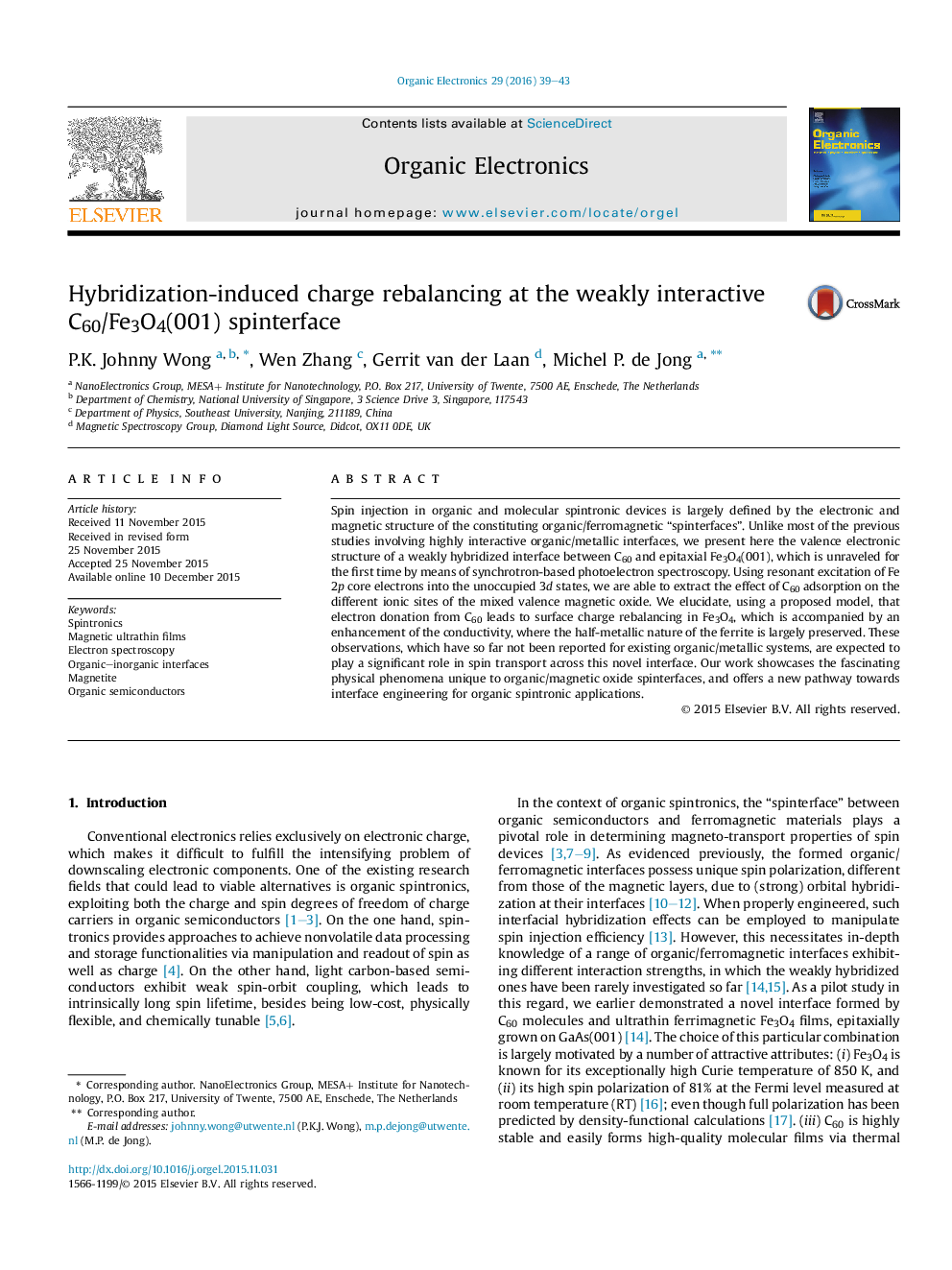| Article ID | Journal | Published Year | Pages | File Type |
|---|---|---|---|---|
| 1264259 | Organic Electronics | 2016 | 5 Pages |
•The weakly interacting C60/Fe3O4(001) spinterface has been investigated by resonant photoemission spectroscopy at the Fe L-edge.•Electron donation from C60 leads to surface charge rebalancing in Fe3O4.•An enhancement of the conductivity and preservation of the half-metallic nature of the ferrite have been observed.•The organic/magnetic oxide spinterface offers a new pathway towards interface engineering for organic spintronic applications.
Spin injection in organic and molecular spintronic devices is largely defined by the electronic and magnetic structure of the constituting organic/ferromagnetic “spinterfaces”. Unlike most of the previous studies involving highly interactive organic/metallic interfaces, we present here the valence electronic structure of a weakly hybridized interface between C60 and epitaxial Fe3O4(001), which is unraveled for the first time by means of synchrotron-based photoelectron spectroscopy. Using resonant excitation of Fe 2p core electrons into the unoccupied 3d states, we are able to extract the effect of C60 adsorption on the different ionic sites of the mixed valence magnetic oxide. We elucidate, using a proposed model, that electron donation from C60 leads to surface charge rebalancing in Fe3O4, which is accompanied by an enhancement of the conductivity, where the half-metallic nature of the ferrite is largely preserved. These observations, which have so far not been reported for existing organic/metallic systems, are expected to play a significant role in spin transport across this novel interface. Our work showcases the fascinating physical phenomena unique to organic/magnetic oxide spinterfaces, and offers a new pathway towards interface engineering for organic spintronic applications.
Graphical abstractFigure optionsDownload full-size imageDownload as PowerPoint slide
